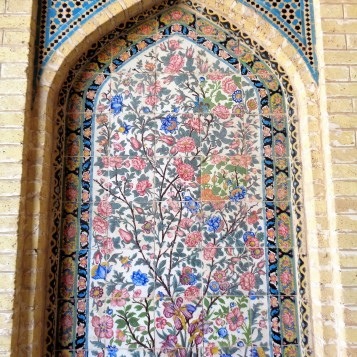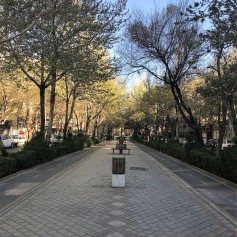
Persians believe that heaven is a garden or Firdaus. The word paradise comes from the Zoroastrian word Para Daeza that was translated into Persian as Firdaus.
Cyrus the Great was the first to introduce Persian Gardens. Built in his imperial capital, Pasargadae in 600 BC, the gardens were a symbiosis of Iranian (Medo-Persian), Assirian and Babylonian aesthetics. Today, the gardens have vanished just the same way as the Hanging Gardens of Babylon have disappeared. The two would have thrived at about the same time, some 1500 kms apart. (Hanging Gardens of Babylon were built by Nebuchadnezzar for his Median queen, Amytis. One of the seven wonders of the ancient world, the terraced gardens were built to resemble the cascading foliage on the slopes of Zagros Mountains so Amytis would not miss her Iranian homeland.)
Firdaus inspired future Persian rulers, wealthy merchants and more recently, urban planners to construct these earthly paradise in their palaces, homes and also as garden cities. Aside from being cultural and religious extensions, the gardens were also representations of Persian design elements that became prototypes for other garden architecture such as the Palais de Versailles in France, Alhambra in Spain and Taj Mahal in India.

The most impressive aspect of these gardens was that they were built in dry and arid places quite close to deserts like Dasht-e-Kavir and Dasht-e-Lut. Aside from their geometric divisions into 4 quadrants, which borrows from the Zoroastrian belief of the universe being divided into 4 sacred elements namely: air, fire, water and earth, the key feature in all gardens is an underground source of water that is channeled via kannats or canals (incidentally, the word canal borrows its etymology to kannat).

A large central pool was the focal point of all gardens. These reflected the main building and also the sky, thus connecting heaven with earth through design concept. Quite appropriately, the rectangular pool is built with blue tiles to reflect the sky, which the Europeans have borrowed to construct their own garden pools.

The fours quadrangles or Chahar Bagh were planted with cypress and fruit-bearing trees, fragrant flowers such as lilies and rose bushes, and orange blossom orchards.
Today, these gardens, water fountains and kannats are an integral part of every traditional house, city and even a mosque in Iran.The country has made a special effort to build parks in all its towns and cities where families come to picnic with their families, serving the true purpose of bringing people close to the nature. Even the architecture of mosques have images of flowers, peacocks and vases on its entrance indicating we are entering paradise.
In Iranian mosques, organic motifs combine beautifully with the geometric motifs (left). Tree of Life – the eternal tree believed to grow in paradise (right)The garden cities of Isfahan and Shiraz are one of the finest examples of urban planning.
In Shiraz for instance, the boulevards have been laid out with orange blossom trees over a bed of hyacinths, roses and tulips which let out a heady fragrance in spring. In fact, orange blossoms are just about everywhere and the fragrance is intoxicating when passing by even a sole shrub, let alone an entire row. On another road, I saw a long channel of landscaped water canal as the divider.
My most favourite city in Iran – Isfahan. I haven’t seen better urban planning in any other city in the world so far (left). A fragrant road divider with orange blossom trees and a colourful array of hyacinth, tulip and rose flowers (centre). A water channel as a divider in Shiraz leads up to a large fountain rotunda (right).
Paradise Lost
Yet, with all the scientific knowledge of channeling underground water via kannats for household and for irrigation purposes Iran’s rivers and cisterns run dry, with not even a trickle of water left in them.
“Water is a big problem in Iran and even though we have oil, gold and uranium, it is water that is priceless for us,” says our driver, who explained that most of the water is held at higher levels to be used up for steel industry.
For all that the Persians have achieved, and the architecture they have built to sustain a paradise on earth, that is such a crying shame!
(Check out my other blog on Finding Firdaus in Tashkent’s Chorsu Bazaar on World Without Compass)













[…] Cyrus the Great founded the first Achaemenid empire in 600 BC. From Media, then Lydia and finally Babylonia, Cyrus expanded his kingdom and thus, together with Greek, Babylonian and Egyptian civilisations, the Persian empire entered the historical realm of the world. […]
LikeLike
I love these gardens and courts…. The only place I’ve seen similar to it is the Alhambra. Simply glorious!
LikeLike